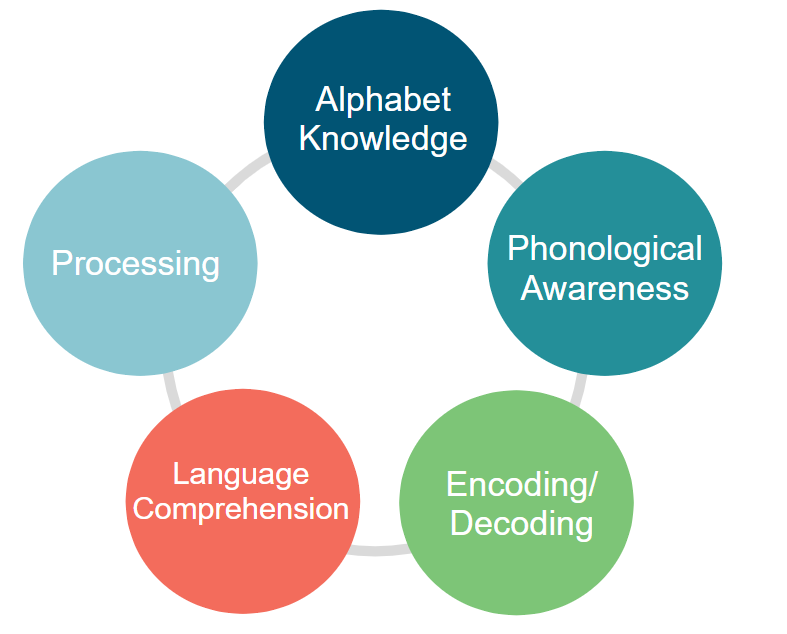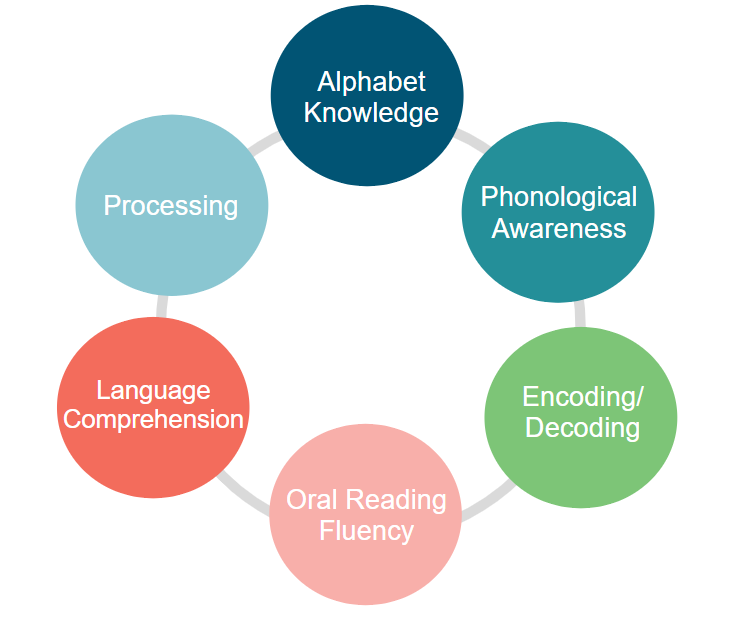Reading
The mission of the Elementary Reading program in Loudoun County Public Schools is to teach all students how to read and comprehend written text so that they may become independent readers and lifelong learners with a firm grasp of the written world that surrounds them. The primary responsibilities of Reading Specialists in Loudoun County Public Schools are to coordinate the school's reading program and help find ways of reaching struggling readers. As reading specialists, we provide training and coaching for teachers, meet with small groups, team teach with classroom teachers, coordinate assessment programs and serve as a resource to teachers and parents to support reading instruction.
All About VALLSS (formerly PALS)
The Virginia Language and Literacy Screening System (VALLSS) is the state-provided screening tool for Virginia's Early Intervention Reading Initiative. The purpose of the VALLSS assessment is 3-fold:
1) Provide a measure of foundational literacy skills
2) Identify students at risk for reading difficulties
3) Indicate literacy skills that require more instruction and intervention
For students in Kindergarten, the screening will consist of assessments in the following areas:
For students in Kindergarten, the screening will consist of assessments in the following areas:

In grades 1-2, the screening will consist of assessments in the following areas:

Some students in Grade 3 will be given the PALS (Phonological Awareness Literacy Screening) assessment--
This assessment measures--spelling, word recognition in isolation, and oral reading in context.
Links
We have listed some of our favorite website links on our web page. The content of these links is not controlled by LCPS. While school staff reviews links when they are inserted, the content may change. If you find any linked home page content you consider inappropriate, please bring the matter to the attention of the building principal. Remember that the outside source Web page may link to other pages that have not been reviewed; explore at your own risk.
Useful Web Sites and On-Line Resources
The VLP (Virginia Literacy Partners) have created a vast list of resources specifically for families!
This web site is part of PBS. It has tons of articles and activities to help parents help their children.
Parent tips from Reading Rockets offer easy ways to support students from bilingual households.
Lots of your children’s favorite PBS show characters have activities to reinforce reading skills.
This is the web site of the Children’s Book Council – a great resource to find quality books for your children.
The International Reading Association
These links are to interactive sites for children
This link takes you to the Loudoun County Public library. There is information on ebooks, progr
10 Simple Reading Comprehension Strategies for Elementary School Children
Recently there has been a wave of panic among parents and teachers as a result of the falling standards of literacy in schools, and this has been brought to bear in a number of government-led reports and investigations in the English speaking world. One of the principal concerns is the standard of reading comprehension among elementary school children.
This article outlines ten simple and easy-to-implement reading comprehension activities for parents of elementary-level students.
1. Ask simple questions while you read with or to your child
Be sure to ask your child questions about what has happened in a passage of the storybook you are reading, such as “What do you think the rabbit will do now?” or “Why do you think the little boy went inside the house?” This is a great way to check that your child is staying focussed on the story, and is aware of what is happening.
2. Use prediction strategies
Ask your child what she thinks is going to happen next in the story. You can do this at the end of each page, or at the end of a chapter for older readers.
3. Encourage your child to relate what is happening in the story to his own life
This is a good way to enable your child to relate to the events of the story, and a powerful strategy for boosting reading comprehension, as we are always more stimulated when we are affected personally. If, for example, there is a pet in the story, you can ask “You have a pet as well, don’t you. What’s his name? What type of animal is he?”
4. Use the ‘retelling strategy’
Ask your child to tell you what has happened in the story. This can be either verbal or written, and can be done either at the end of the story or at the end of each section.
5. Choose reading materials that you know your child will be interested in
If, for instance, your child has shown an interest in tractors or cars, try reading a storybook that features these vehicles.
6. Use contextual clues to help your child
If your child is having problems deciphering the meaning of certain words, use contextual clues within the story to help. This will teach your child a valuable skill, while allowing her to explore new boundaries in a comfortable and safe environment.
7. Adopt the ‘Main Idea’ reading comprehension strategy
Often a new storybook can seem overwhelming to a young reader, as there are so many new concepts, themes, words and situations to digest. It is always a good idea to encourage your child to see the bigger picture when you read to him, as this will give him a framework to pin the rest of the story to.
8. Alternate reading hard and easy texts with your child
Similarly, re-read known and loved stories as well as new books each day. The new books will challenge her, while re-reading the old stories will nurture her reading confidence and provide a safety blanket of familiarity.
9. Read aloud to your child
Language means more to young children when they hear it than when they read it. Listening to a story that is being read to them enables children to understand how intonation and patterns of language can affect the meaning
of a story. It also gives them access to a world that only more adept readers would be able to otherwise enjoy.
10. Read with your child every day
This is possibly the most important point of all. Set aside a regular time each day to read with your child. It doesn’t have to be for more than 15 minutes, but the benefits from setting aside a bit of time to read with your little one can be amazing. Create a cosy nook on the couch, bring along a few loved toys, cuddle up with a favourite book and, most importantly, have some fun. If you don’t treat it as a chore, neither will your child.
